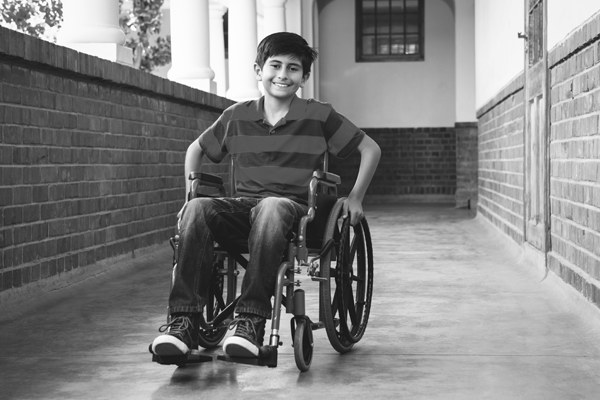Study Identifies Barriers High Schools Face When Implementing and Enforcing State Concussion Laws
Study Identifies Barriers High Schools Face When Implementing and Enforcing State Concussion Laws https://pediatricsnationwide.org/wp-content/themes/corpus/images/empty/thumbnail.jpg 150 150 Laura Dattner Laura Dattner https://pediatricsnationwide.org/wp-content/uploads/2023/03/LauraDattner-web-002.jpg- November 20, 2019
- Laura Dattner
All 50 U.S. states enacted concussion laws between 2009-2014 to mitigate the consequences of concussion. While details of the laws vary from state to state, all state laws address three main factors: concussion education; removal from play after suspected concussion; and return-to-play requirements.
A new study conducted by researchers at the Center for Injury Research and Policy in the Abigail Wexner Research Institute (AWRI) at Nationwide Children’s Hospital investigated the barriers high schools across the country face when implementing state concussion laws.
The study, published today in Journal of Adolescent Health, found that many high schools reported challenges implementing and enforcing the three main parts of state concussion laws. Athletic trainers noted in interviews that the concussion education materials currently available often used complex medical terms, did not require active learning, and were often not available in needed languages. In addition, athletic trainers noted a lack of buy-in to state law requirements from both coaches and parents, who may not understand the potential severity of these injuries, which, in turn, made scheduling a time for this training and full compliance with school concussion policies challenging.
“Our hope is that school administrators, athletic directors, and athletic trainers can use these findings to identify implementation barriers in their own schools,” said Ginger Yang, PhD, MPH, senior author of the study and principal investigator in the Center for Injury Research and Policy at Nationwide Children’s. “These findings can help high schools structure their school’s policies to maximize the safety of student-athletes and shed light on necessary updates and revisions to current state-level concussion laws.”
The barriers to removal from play were associated with athletes’ attitudes towards concussion and concussion reporting as well as their unwillingness to disclose concussion symptoms, and resistance from coaches and parents. Sports culture and “old school” mentality of parents and coaches that encourage athletes to “play through it” and “toughen up” can create an environment that is not conducive to athletes reporting symptoms. Lack of an effective system for communicating across all levels was also noted, especially when a concussion occurred during an away game.
“It is imperative that parents, athletes and coaches understand and follow their school’s concussion policy. It’s better to sit out for a game than to get injured worse and miss the rest of the season,” said Sean Rose, MD, pediatric sports neurologist and co-director of the Complex Concussion Clinic at Nationwide Children’s. “Athletic directors, school administrators and athletic trainers can help create an environment that focuses on the safety of the kids and encourages the disclosure of concussion symptoms and immediate removal from play following an actual or suspected concussion.”
Furthermore, Dr. Rose suggests that pediatricians and primary care providers (PCPs) can make a positive impact on the adherence to concussion policies and laws.
“PCPs should provide education about concussions during sports physicals,” he says. “They should also discuss a plan for who the athlete would need to see for medical care in the event of a concussion. This can help prevent confusion and streamline care for the concussion.”
Once an athlete has been removed from play because of a concussion, they must be cleared by a qualified medical provider. For PCPs who are not familiar or comfortable with clearing an athlete, they can refer to an appropriate provider – sports medicine doctor, sports neurologist or other expert.
Barriers to return-to-play centered on policy-level influences, including high costs of and limited access to medical treatment and lack of clarity or specification in state laws regarding which medical professionals can, or should, provide return-to-play clearance. The importance of athletes being treated by a medical professional with up-to-date concussion-specific medical training is desired, but access to these professionals can be disproportionately challenging for some athletes.
Policy-makers can use these findings to update current state concussion laws, clarify return-to-play language, and include ways for athletes who face sociocultural or economic barriers to be cleared to safely return-to-play. By identifying various barriers to the implementation of state concussion laws at the school level, effective implementation strategies can be developed to increase the public health impact of these laws.
More information about concussions in young athletes is available from the following resources:
- Nationwide Children’s Hospital online guides for athletes, coaches, parents, educators, and school administrators
- CDC Heads Up Concussion online materials for parents, youth sports, school sports, school professionals, and health care providers
Data for this study were obtained from semi-structured telephone interviews with 64 high school athletic trainers whose school participated in High School Reporting Information Online during the 2014-15 and 2015-16 academic years. Data were analyzed using thematic analysis.
About the author
Laura Dattner, MA, is a research writer in the Center for Injury Research and Policy of the Abigail Wexner Research Institute at Nationwide Children’s Hospital. With both a health communications and public health background, she works to translate pediatric injury research into meaningful, accurate messages which motivate readers to make positive behavior changes.
-
Laura Dattnerhttps://pediatricsnationwide.org/author/laura-dattner/
-
Laura Dattnerhttps://pediatricsnationwide.org/author/laura-dattner/April 4, 2019
-
Laura Dattnerhttps://pediatricsnationwide.org/author/laura-dattner/
-
Laura Dattnerhttps://pediatricsnationwide.org/author/laura-dattner/
- Posted In:
- In Brief









